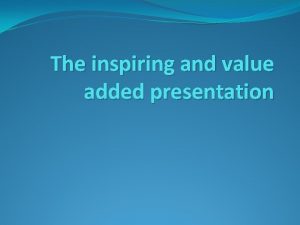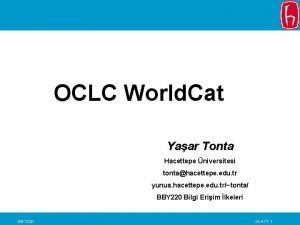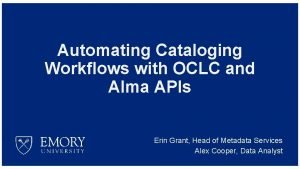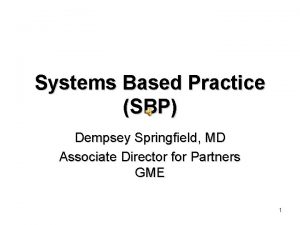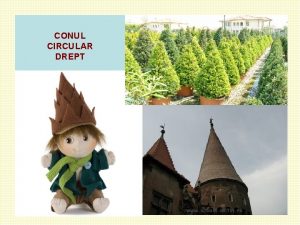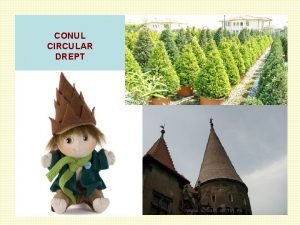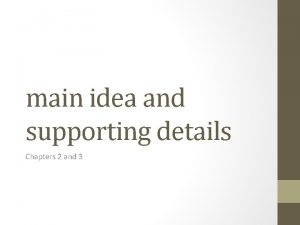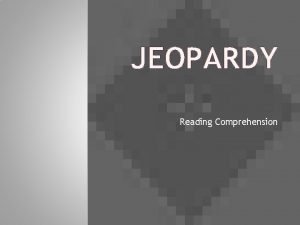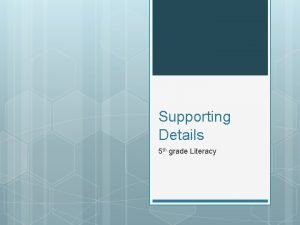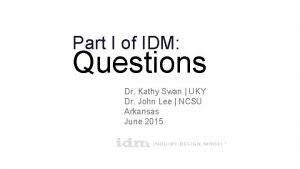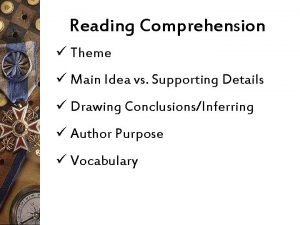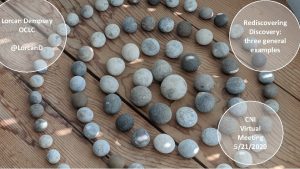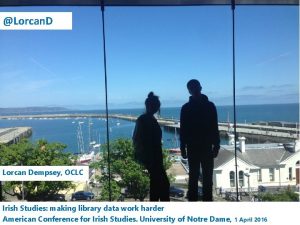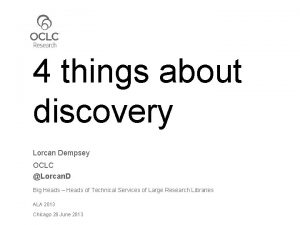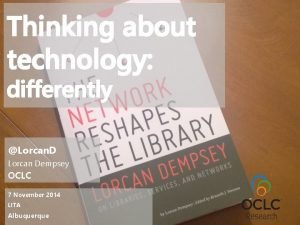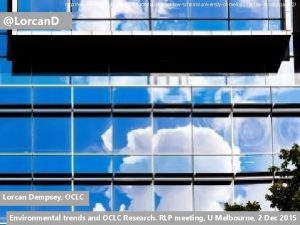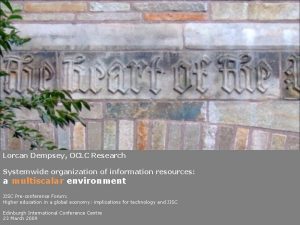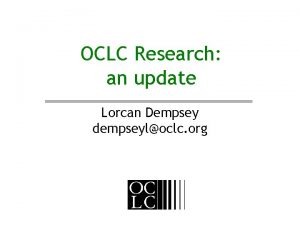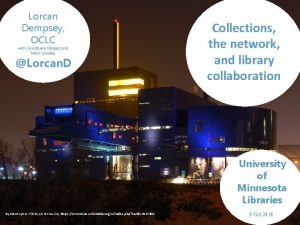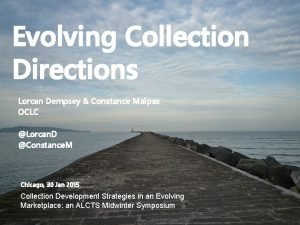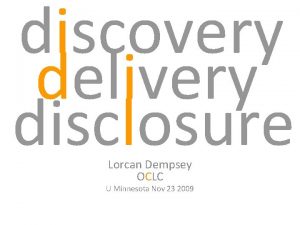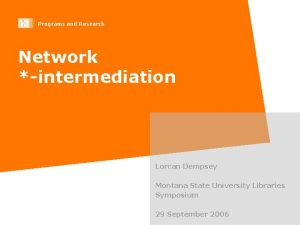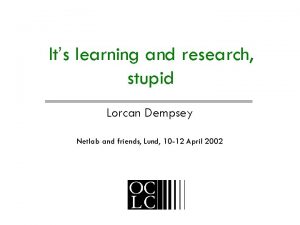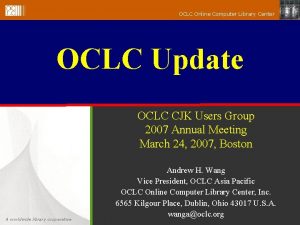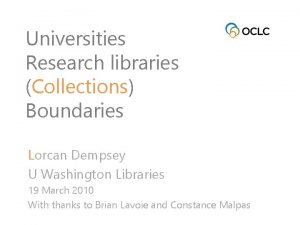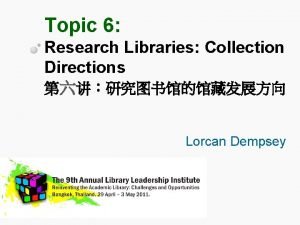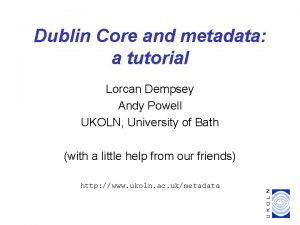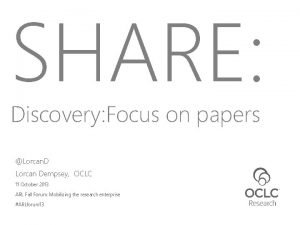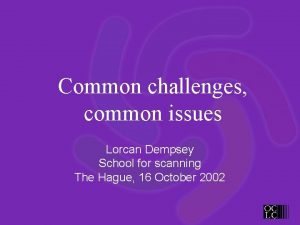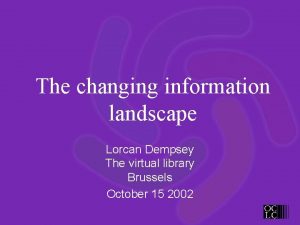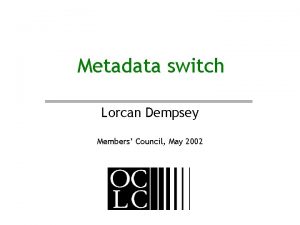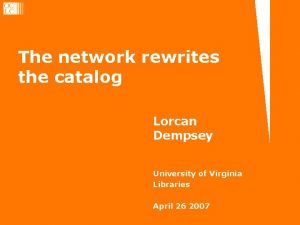Inspiring and supporting research Lorcan Dempsey OCLC CONUL











































- Slides: 43

Inspiring and supporting research: Lorcan Dempsey, OCLC CONUL Annual Conference 2017 Athlone, Ireland @Lorcan. D 30/31 May 2017 The network reshapes the research library collection

Changing characteristics of collections Prelude: Collections as a service

Places Student success Research support: creation Collections as a service

Research libraries achieved status in this environment by acquiring more than their peers or by building niche collections of particular depth. … Collections no longer lie at the center of research library operations and goals, even as academic communities focus ever more inclusively on knowledge and information. Hazen. Lost in the cloud. 2011

Outside in Facilitated Collect -ive Inside out Collections: expanding view

Different dynamics across collecting activity Prelude: Collection attention: the collections grid

Open Web Resources In many collections ‘Published’ materials Licensed Outside in (discovery, acquisition) Low Stewardship Inside out (discoverability, stewardship) Research & Learning Materials Purchased In few collections Figure: OCLC Collections Grid. High Stewardship Special Collections Local Digitization OCLC Research, 2014

Monographs – managed in a different way 1. Managing down print - shared print 2. Shift to demand driven acquisition 3. Growing difference between market-available and specialised (e. g. area studies) 4. Emergence of ‘e’ (platform) 5. Digital corpora (Hathi Trust, Google, …) 6. Disciplinary differences Journals – part of an evolving research life cycle 1. Publishers looking to research workflow (Elsevier – Mendeley, Pure) 2. Complex open access environment - National science/research policy, grant-makers, publishers 3. A part only of the scholarly record – data, etc. 4. Licensed materials are now the larger part of academic library budgets. Big deal.

Research and learning material – new researcher, publisher and library roles 1. Evolving scholarly record: research data, eprints, . . 2. IR – role and content? 3. Research information management (profiles, outputs, …) 4. Support for digital scholarship 5. Support for open access publishing Special collections, archives – mobilized for research, reputation, …. 1. Release more value through digitization, exhibitions, undergraduate research, … 2. Streamlining processing, production, … 3. Network level aggregation for scale and utility – DPLA, Europeana, DRI, Pacific Rim Digital Library,

Inside out: Create, manage and make discoverable memory, community, evidence.

A network logic: a coordinated mix of local, external and collaborative services are assembled around user needs Facilitated

Collective collections: The systemwide organization of collections becomes more important. It makes sense to do acquisition, discovery and/or stewardship at the network level.

Two trends and a direction Reconfiguration of research work (leading to inside out collection) Reconfiguration of information space (leading to facilitated collection) Collective collections

Two trends Reconfiguration of research work by network/digital environment. The inside out collection Reconfiguration of the information space by network/digital environment. The facilitated collection

Reconfiguration of research work by network/digital environment. Inside out collection

Research outputs Expertise /Identity Rinfrastructure Special colls

Supporting the creative process: the emerging scholarly record Research outputs


Expertise and reputation: Identity > workflow > content Expertise/ Identity

Medical center Creation, management and disclosure: Vice president for research CIO Tech Transfer Office News Bureau Advancement & corporate relations Institutional Reporting Provost Data Warehouse Colleges & depts Graduate school Researcher Research manager Research support Rinfrastructure Research Data Management RIM/Profiling system Institutional Repository Digital scholarship LIBRARY User education & training Office of undergraduate research Adapted from a pic by Rebecca Bryant, OCLC Research Disciplines & departments Campus center for teaching & learning

A publisher’s new job description Annette Thomas, Then CEO of Macmillan Publishers http: //www. against-the-grain. com/2012/11/a-publishers-new-job-description/ Her view is that publishers are here to make the scientific research process more effective by helping them keep up to date, find colleagues, plan experiments, and then share their results. After they have published, the processes continues with gaining a reputation, obtaining funds, finding collaborators, and even finding a new job. What can we as publishers do to address some of scientists’ pain points?

Researcher Librarian Research manager

Special colls Research, reputation, relevance

Special colls Anamnesis – the case of 1916 In some respects this collection of RTÉ archive material is a microcosm of that Irish psyche. … [RTE’s] archive reflects Irish preoccupations. Its omissions point towards our blind spots. On the debit side is the fact that, as a repository of oral history the RTÉ catalogue includes barely thirty first-hand Irish witnesses of the First World War. On the merit side is the fact that it includes all of thirty first-hand witnesses of the Great War in a time of calculated and culpable amnesia.

Support for creation, management and disclosure of memory/ evidence Workflow is the new content Reputation Reconfiguration of research work by network/digital environment. The inside out collection manage and disclose the intellectual outputs and expertise of the institution. From discovery to discoverability Collective collections: Rightscaling and collective action

Reconfiguration of the information space by network/digital environment. Facilitated Collection

ar. Xiv, SSRN, Re. PEc, Pub. Med Central ( disciplinary repositories that have become important discovery hubs); Google Scholar, Google Books, Amazon (ubiquitous discovery and fulfillment hubs); Mendeley, Research. Gate (services for social discovery and scholarly reputation management); Goodreads, Library. Thing ( social description/reading sites); Wikipedia, Yahoo Answers, Khan Academy (hubs for open research, reference, and teaching materials). Fig. Share, Open. Refine ( data storage and manipulation tools) Github ( software management)


http: //www. xkcd. com/917/ Value relates to locally assembled collection. A print logic: the distribution of print copies to multiple local destinations Value relates to ability to efficiently meet a variety of research and learning needs. A network logic: a coordinated mix of local, external and collaborative services are assembled around user needs A collections spectrum The ‘owned’ collection Purchased and physically stored The ‘facilitated’ collection Meet research and learning needs in best way

The ‘external’ collection: Pointing researchers at Google Scholar; Including freely available ebooks in the catalog; Creating resource guides for web resources. The ‘borrowed’ collection The ‘shared print’ collection The ‘shared digital’ collection The evolving scholarly record A collections spectrum The ‘owned’ collection Purchased and physically stored The ‘licensed’ collection The ‘demanddriven’ collection Note: Libraries have variable Investments across the entire spectrum The ‘facilitated’ collection Meet research and learning needs in best way

The specialized collection Reconfiguration of the information space by network/digital environment. The facilitated collection

The specialized collection

Specialization of locally acquired/held collections? The specialized collection Engagement Understand respond to needs of faculty and students. A diffuse responsibility for stewardship of the scholarly record Collective collections: Rightscaling and collective action Reconfiguration of the information space by network/digital environment. The facilitated collection

Support for creation, management and disclosure of memory/ evidence The specialized collection Reconfiguration of research work by network/digital environment. Reconfiguration of the information space by network/digital environment. The inside out collection The facilitated collection

Collective collections: Rightscaling and collaborative action … The best example of an activity that can be done most appropriately in a networked context is curation. Here I would argue that a library’s collection is not owned solely by the library, but by the society or culture that has collected it and put it in the library in the first place. We own the collection as a culture, and we must attend to it as a culture. John Wilkin

The rise of the collective collection System-wide organization of collections—whether the “system” is a consortium, a region, a country …. Discovery/discoverability Sharing/acquisition Stewardship

Operationalising the Collective collection? Rightscaling – optimum scale? The ‘borrowed’ collection The ‘shared print’ collection The ‘shared digital’ collection The ‘shared scholarly’ record

Rightscaling – optimum scale? Shared print Shared Print Management Research data

Soft power of groups … Venue for: * Scaling learning and innovation * Scaling services * Scaling collections

Outside-in Shared print collections Consortial borrowing Web archiving Group D 2 D, stewardship, acquisition Inside-out Research data Scholarly Materials Digital Collections Network discovery? Group stewardship? Union catalogue?

Inside out: Create, manage and make discoverable memory, community, evidence. Facilitated: collecting according to a network logic: a coordinated mix of local, external and collaborative services are assembled around user needs Collective collections: The systemwide organization of collections becomes more important. It makes sense to do acquisition, discovery and/or stewardship at the network level.

Thank you, @Lorcan. D

Citations and fuller details are included in slide notes where relevant. Thanks to my colleagues Brian Lavoie, Constance Malpas Bryant for assistance as I prepared this presentation. The presentation follows the outline of: Dempsey, L. , (2016). Library collections in the life of the user: two directions. LIBER Quarterly. 26(4), pp. 338– 359. DOI: http: //doi. org/10. 18352/lq. 10170 @Lorcan. D and Rebecca
 Lorcan martin
Lorcan martin Tower garden by juice plus
Tower garden by juice plus Value added elements
Value added elements Oclc
Oclc Oclc classfy
Oclc classfy Oclc worldshare management services
Oclc worldshare management services Classify.oclc.org
Classify.oclc.org Oclc api
Oclc api Dempsey travel trim
Dempsey travel trim Dempsey springfield
Dempsey springfield Josh dempsey georgia
Josh dempsey georgia Con desfasurare
Con desfasurare Desfasurarea unui con
Desfasurarea unui con Bernardsville middle school
Bernardsville middle school Paul stephen dempsey
Paul stephen dempsey Planta avasculara
Planta avasculara Moore v dempsey oyez
Moore v dempsey oyez Define research scope
Define research scope Contrast applied research and basic research
Contrast applied research and basic research Longitudinal research and cross sectional research
Longitudinal research and cross sectional research Example of applied research
Example of applied research Research design exploratory descriptive and causal
Research design exploratory descriptive and causal Practical research inquiry
Practical research inquiry Technique involved in defining a problem
Technique involved in defining a problem Topic sentence
Topic sentence What is a compelling question
What is a compelling question Principles of information security 5th edition pdf
Principles of information security 5th edition pdf Minor and major details
Minor and major details Main idea major and minor details
Main idea major and minor details What is the implied main idea of the passage?
What is the implied main idea of the passage? Concept map main idea supporting details
Concept map main idea supporting details Main idea and supporting details example paragraphs
Main idea and supporting details example paragraphs Reading comprehension jeopardy
Reading comprehension jeopardy Major supporting sentence
Major supporting sentence Primary and supporting instruments
Primary and supporting instruments Main idea and supporting details examples
Main idea and supporting details examples Instrument scan techniques
Instrument scan techniques Example of compelling question
Example of compelling question Topics presented in chapters
Topics presented in chapters Supporting details example
Supporting details example Details example
Details example Example of supporting questions
Example of supporting questions Outline supporting details
Outline supporting details Reading comprehension main idea and supporting details
Reading comprehension main idea and supporting details


